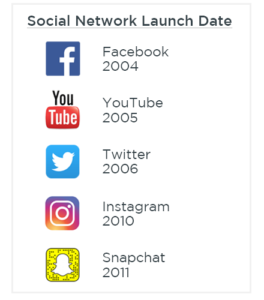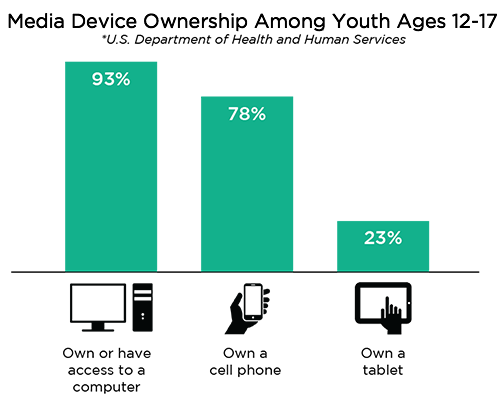4 Ways Parents Can Protect Their Teens From Depression and Anxiety

Teenagers today are growing up in an entirely different climate than the one their parents grew up in. The economy, national tragedies, technology and social media are playing major roles in their development, and as a result, the number of young people experiencing anxiety and depression is on the rise.
A notable difference in today’s teenager is that much of their emotional life is lived digitally. Smartphones and tablets give teens the ability to be online an average of 5 hours a day. While the internet offers many opportunities for learning, connecting and sharing one’s voice, it also opens up areas of risk surrounding privacy, liability and safety. Social media sites allow teens to express their identity, but they can also create an inherent need for teens to compete with their peers or live up to an imaginary standard they have placed upon themselves. Teens, parents and schools are also battling cyberbullying, a complex problem that is starting to affect children as young as fifth graders and sadly contributing to teen suicides – some of which have been broadcast on YouTube and Facebook Live for audiences to watch.
 From 2005 to 2014, the prevalence of young people aged 12-20 who reported having a major depressive episode (MDE) increased by 37% according to a national trend study published in the November 2016 Pediatrics journal. These adolescents experienced prolonged feelings of hopelessness and sadness lasting for more than two weeks, exhibiting symptoms such as low self-esteem, loss of interest in normally enjoyable activities, lack of sleep, and low levels of energy and concentration.
From 2005 to 2014, the prevalence of young people aged 12-20 who reported having a major depressive episode (MDE) increased by 37% according to a national trend study published in the November 2016 Pediatrics journal. These adolescents experienced prolonged feelings of hopelessness and sadness lasting for more than two weeks, exhibiting symptoms such as low self-esteem, loss of interest in normally enjoyable activities, lack of sleep, and low levels of energy and concentration.
Mental health treatment for youth hasn’t been able to keep pace with this significant increase in teen depression. Many mental health resources for schools and community providers have actually decreased due to budget cuts. School counselors are overwhelmed with trying to address and care for hundreds of students’ mental health issues in addition to other duties for which they are responsible.
What Parents Can Do
Even though young people are a tech-savvy age group, that doesn’t mean they possess the judgment necessary to use technology safely and responsibly. Adults should use controls, monitoring and modeling to teach youth how to conduct themselves in today’s digital world. Here are a few guidelines to follow:
Establish rules and expectations
On average, kids are getting their first smartphone or tablet around the age of 10. While that’s the trend, parents are the ones who ultimately determine when a child really needs this technology. Parents should communicate that having these devices is a privilege and it comes with responsibility. Creating a family contract is a great way to establish the rules for cellphone/tablet use. Your contract may include:
- an agreement that the device(s) won’t interfere with or distract the child from schoolwork or other important commitments
- specific times or places that the device(s) can or can’t be used
- consequences for breaking the rules: device(s) will be taken away

Set up parental controls
As a parent, you have a right to know what your kids are doing on their digital devices and to control what they can and can’t see or do. With most devices, you have the ability to restrict internet access or use apps to monitor various activity such as your child’s location, the messages they are sending and receiving, their internet use, the social media sites they are on, and more. Here are some great resources to check out:
10 iPhone Apps You Can Use to Monitor Your Kid’s Internet Use
7 Ways to Monitor Your Kid’s Phone, Tablet and Laptop
Discuss threats
As noted earlier, the internet opens up areas of risk surrounding privacy, liability and safety. Kids need to think twice about what they post online and know that their content can be seen and shared by anyone, even strangers. Once it’s online, it’s there forever. The same goes for texting. Kids should always assume their photos and messages can also be shared with more than just the intended recipient. Parents should address these threats and use the family contract to create agreements such as no taking or sending nude selfies, no posting or sending negative comments about others, and no talking to or meeting strangers from the internet.
Model appropriate behavior
Leading by example is the best way to teach your kids how to safely and responsibly use their smartphone/tablet. Make sure the family contract applies to everyone and practice keeping devices away from the dinner table and family outings. Encourage family members to spend less time on their devices and more on being present in the moment.
Children often push boundaries and test their independence, but what is considered normal behavior and when is professional help needed? If your child or teen is exhibiting challenging behaviors, download this FREE Quick Assessment: Does My Child or Teen Need Professional Help?

Related article:




